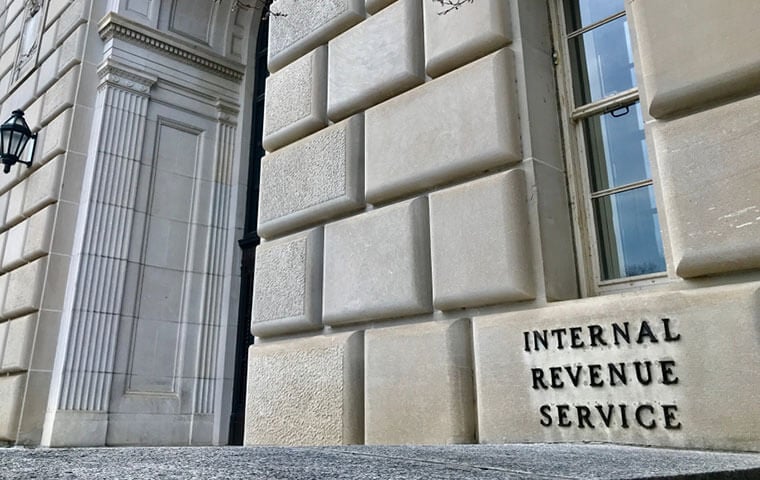 The agency plans to hire some 29,500 employees under the Inflation Reduction Act, but much of that will only replace lost personnel. Image: DCStockPhotography/Shutterstock.com
By: FEDweek Staff
The agency plans to hire some 29,500 employees under the Inflation Reduction Act, but much of that will only replace lost personnel. Image: DCStockPhotography/Shutterstock.com
By: FEDweek StaffAdding new employees and retention of existing employees at the IRS “are critical to ensuring a quality workforce capable of meeting the needs of the American public” but high rates of turnover hamper the former goal and a balky hiring process does the same to the latter, an inspector general report has said.
“Human capital remains a serious, underlying issue with wide-ranging implications for both the IRS and taxpayers,” says the IG’s annual report on management challenges facing the agency, noting that staffing dropped over 2010-2010 by about 15 percent to about 80,000.
The agency plans to hire some 29,500 employees in FYs 2023 and 2024 under funding provided by the Inflation Reduction Act, it said. However, much of that will only replace losses to turnover, which it said is 26 percent above the government-wide average. Some 15,000 employees retired or otherwise separated in 2022, and more than a quarter of the workforce already is retirement-eligible, compared with 15 percent government-wide.
Further, the IRS “will be challenged to recruit, quickly hire, onboard, and train the large number of individuals with the appropriate core competencies to replace both its planned staff attrition and increased staffing levels provided by the IRA,” it said.
“IRS employees in the future will require a broader foundation of core competencies. The IRS envisions a greater number of data scientists as it becomes a data-centric organization. To address increasingly complex tax filings, the IRS indicated in the future its compliance functions will rely on specialized teams who respond to increasingly complex filings,” it said.
The IRS does pay retention incentives, it said, but of the nearly 1,500 employees who received such payments over 2019-2022 outside of IT units, nearly all went to employees who returned to work in the office in the early stages of the pandemic. In addition, it said, the IRS can offer “critical position pay” for positions of high need where recruiting is the most difficult, but six requests initially made in 2019 were not finally approved until three years later and the agency does not plan to continue use of that authority.
Large Share of Federal Workforce about to Experience a Payless Pay Period
OPM Details Coverage Changes, Plan Dropouts for FEHB/PSHB in 2026
OMB Says Federal Workforce RIFs are Starting as Shutdown Drags On
Financial Impact of Shutdown Starts to Hit Home; WH Threatens No Back Pay
Surge of Retirement Applications Is in the Pipeline, Says OPM
See also,
TSP Takes Step toward Upcoming In-Plan Roth Conversions
5 Steps to Protect Your Federal Job During the Shutdown
Over 30K TSP Accounts Have Crossed the Million Mark in 2025
The Best Ages for Federal Employees to Retire

